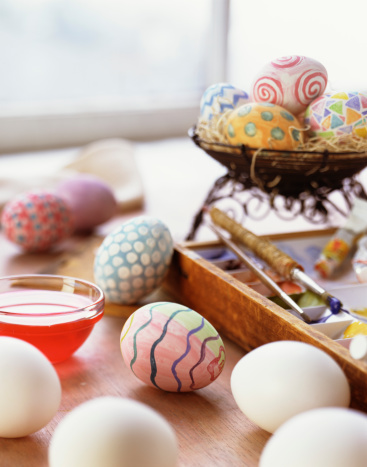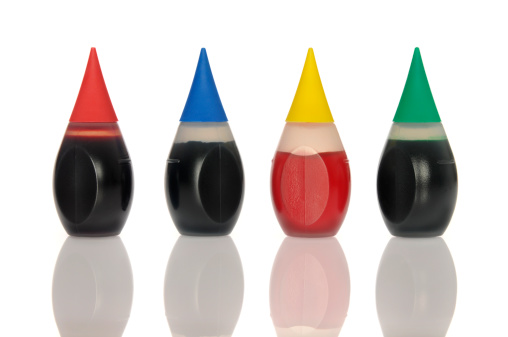Food Dye
One of the most colorful aspects of Easter is decorating the eggs with all different combinations of colors before they are hidden. That, of course, is achieved with the help of food coloring. Any substance that adds color to food or drink is considered food coloring.
 Since certain colors are associated with certain flavors, coloring food can make the food appear more appetizing. Color additives may be added to make food seem more "fun," where candy is the most common example. Food coloring may be utilized to enhance a natural color or correct variation in color. The storage or transport of food can lead to loss of color, which can be remedied by using color additives.
Since certain colors are associated with certain flavors, coloring food can make the food appear more appetizing. Color additives may be added to make food seem more "fun," where candy is the most common example. Food coloring may be utilized to enhance a natural color or correct variation in color. The storage or transport of food can lead to loss of color, which can be remedied by using color additives.
In the past, almost anything could be used to dye food. Some even had trace amounts of toxic metals, including arsenic, lead, and mercury. Many color additives were never tested, but as the use of food coloring increased, so did the concern about their safety.
Soon, artificial dyes took a huge hit. In 1906, the United States Pure Food and Drug Act narrowed a list of 700 synthetic colors down to seven. The ones that are most commonly used are Brilliant Blue FCF (Blue No. 1), Allura Red AC (Red No. 40), Tartrazine (Yellow No. 5), and Sunset Yellow FCF (Yellow No. 6). "FCF" stands for "For Coloring Food" in the US and "For Colouring of Food" in the UK.
Food Coloring

Artificial dyes took another hit when speculations that a link between food coloring and hyperactive behavior in children (ADHD) existed. Personally, I believe there is usually more than one reason for ADHD. However, I also know certain people are more sensitive to different chemicals.
Luckily, there are many natural dyes available for coloring food. Caramel coloring is obtained from caramelizing sugar. Betanin is extracted from beets. Annatto is a reddish-orange dye made from the seeds of the achiote tree. The butterfly pea flower provides a blue dye. Spices, such as paprika, turmeric, and saffron, pull double duty as natural dyes. Cochineal is a crimson dye made from the insect, Dactylopius coccus.
Food dyes are considered to be safer than normal paint, especially when used on the body. In fact, red food dye is commonly used as blood in theatrical productions.






